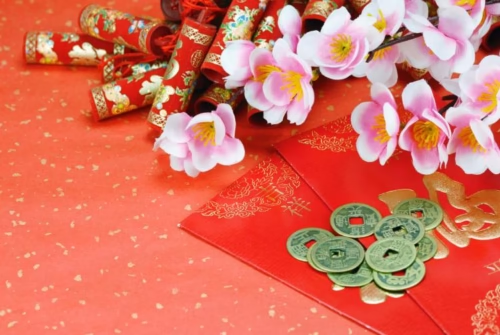- Is Lunar New Year a Public Holiday?
- Why the Lunar New Year Date Changes
- How People Celebrate Lunar New Year in the United States
- Ideas for Visitors and Weekend Planners
- Family Traditions and Gift Giving
- Practical Tips for Joining Family Traditions
- Public Life and Travel Conditions
- Community and Historical Background
- Symbols and Traditions of Lunar New Year
- The Chinese Zodiac
- How to Make the Most of Lunar New Year 2026
Lunar New Year, also called Chinese New Year or the Spring Festival, marks the first day of the year in the traditional Chinese calendar. In 2026, Lunar New Year in the United States falls on Tuesday, February 17.
Many cities across the country host parades, festivals, and family events. Travelers, couples, and families often plan weekend trips around these celebrations to see lion dances, dragons, lanterns, and fireworks up close.
Is Lunar New Year a Public Holiday?
Lunar New Year is not a federal public holiday in the United States. Most government offices, banks, and many schools stay open.
In 2026, the Lunar New Year falls on the same date as Shrove Tuesday or Mardi Gras, which is a public holiday in a few states. In those places, some schools and offices may be closed, and regular business hours can change.
Across the country, some Chinese-owned or Asian-owned businesses may close for the day or shorten their hours so employees can celebrate with their families. In neighborhoods with large Lunar New Year festivals, streets may close for parades and public events.
If you plan to visit a city for the Lunar New Year 2026, check:
- Local event calendars
- Public transport schedules
- Parking rules and possible street closures
- Business hours for the restaurants and shops you want to visit
Planning helps avoid delays and long waits, especially when traveling with children or in a group.
Why the Lunar New Year Date Changes
Lunar New Year does not fall on the same date every year. The holiday is based on the traditional Chinese lunisolar calendar, which follows both the moon and the sun.
Lunar New Year usually occurs between January 21 and February 21. The exact date changes from year to year because each new year starts with the second new moon after the winter solstice.
For quick reference, recent and upcoming dates in the United States include:
- 2022: February 1
- 2023: January 22
- 2024: February 10
- 2025: January 29
- 2026: February 17
- 2027: February 6
- 2028: January 26
- 2029: February 13
- 2030: February 3
These dates help travelers and families plan for future Lunar New Year trips and traditions.
How People Celebrate Lunar New Year in the United States
Lunar New Year celebrations in the United States often last several days. They bring together Chinese American communities and many other Asian communities, as well as visitors who want to experience the holiday for the first time.
Common activities include:
- Lunar New Year parades with floats, marching bands, lion and dragon dances, and firecrackers
- Traditional dances such as lion dances, dragon dances, and folk performances on outdoor stages
- Street fairs, with food stalls, market booths, crafts, and cultural demonstrations
- Fireworks and firecracker shows, where local rules allow
- Fun runs or walks in or near Chinatown districts
- Balls, banquets, and pageants, often held by community groups or cultural associations
In many cities, restaurants offer special Lunar New Year menus with dishes that symbolize luck, long life, and prosperity. Families may reserve tables weeks in advance.
Ideas for Visitors and Weekend Planners
People in the United States who want to join Lunar New Year 2026 activities can:
- Visit a Chinatown or Asian district in a Major city for parades and festivals
- Book a weekend trip to a town known for its Lunar New Year events
- Try traditional foods such as dumplings, rice cakes, longevity noodles, and sticky rice desserts
- Watch lion and dragon dances in person or at a cultural center
- Take part in community workshops on calligraphy, paper cutting, or lantern making
If you are new to the holiday, start with public, family-friendly events. Many cities promote free or low-cost programs hosted by museums, libraries, and community centers.
Family Traditions and Gift Giving
For many Chinese American families, the Lunar New Year is a time to gather, honor elders, and welcome a fresh start.
Common traditions include:
- Cleaning the home before the new year to sweep out old luck
- Decorating with red couplets, banners, and paper cuttings with messages of good fortune
- Sharing a large family meal on Lunar New Year’s Eve or New Year’s Day
- Visiting relatives and friends during the first days of the new year
Gift giving is also an important part of the celebration. Children often receive red envelopes with money, called hong bao, ang pao, or lai see. The red color stands for happiness, success, and good luck. Some friends and co-workers may also exchange small gifts such as sweets, tea, or fruit.
Practical Tips for Joining Family Traditions
If you are invited to a Lunar New Year gathering:
- Bring a small gift, such as oranges, tangerines, or sweets
- Avoid bringing clocks or sharp objects, which can be seen as bad luck
- Wear clean, neat clothes, and consider wearing some red for good luck
- Learn a simple greeting such as “Happy Lunar New Year” or “Gong Xi Fa Cai”
Respect for elders is important. Many families greet parents and grandparents first and may offer blessings for health and long life.
Public Life and Travel Conditions
Because Lunar New Year is not a federal public holiday, most services run as usual. However, public life can still feel different in cities with large celebrations.
People may notice:
- Heavier traffic near Chinatown districts and event sites
- Street closures for parades and fairs
- Crowded public transport before and after major events
- Long waits at popular restaurants in the days around the holiday
Travelers who want to see parades or fireworks should arrive early. It helps to check local transit maps and event guides before leaving home or the hotel.
Community and Historical Background
Chinese communities have a long history in the United States. According to the U.S. Census Bureau’s 2000 data, people who identified as Chinese accounted for more than 20 percent of the 11.9 million Asian residents at that time. Around 2.7 million people reported Chinese heritage, making it the largest Asian group in the country in that census.
Chinese historical groups trace Chinese arrivals in the Americas back to the 1600s. Larger waves of Chinese immigrants arrived in the 19th century, especially during the Gold Rush and the construction of railroads.
With these communities came cultural traditions such as Lunar New Year. Over time, many cities adopted public parades and festivals that welcome both residents and visitors from across the country.
Today, Lunar New Year events often highlight not only Chinese traditions, but also celebrations from other Asian cultures that follow the lunar calendar, such as Vietnamese, Korean, and some other East and Southeast Asian communities.
Symbols and Traditions of Lunar New Year
Lunar New Year is rich in symbols that represent luck, wealth, health, and fresh beginnings.
Common symbols include:
- Red decorations such as banners, lanterns, paper cuttings, and door couplets
- Flowers, which stand for growth and new life, are often used in home and shop displays
- Tangerines and oranges, which signal luck and wealth, are often placed in bowls near entryways
- Chinese calligraphy, showing phrases about good fortune, is written on red paper and hung in homes and businesses
- Red envelopes with money, given mainly to children and sometimes to younger relatives or employees
The color red appears everywhere. Many people believe red protects against bad luck and invites good fortune.
The Chinese Zodiac
Each Lunar New Year connects to one of the 12 animals of the Chinese zodiac. The cycle includes:
Rat, Ox, Tiger, Rabbit, Dragon, Snake, Horse, Goat, Monkey, Rooster, Dog, and Pig.
People often talk about their zodiac sign and may check how the year is expected to go for that animal. Many decorations, toys, and souvenirs for that year feature the zodiac animal, especially in shops and festival markets.
How to Make the Most of Lunar New Year 2026
Travelers, weekend planners, and families in the United States can use Lunar New Year 2026 as a chance to explore culture, food, and community events.
Helpful steps include:
- Research your city or a nearby major city
Check city tourism sites, Chinatown associations, and cultural centers for event listings. - Plan your schedule around key events.
Major parades and fireworks are often held on weekends closest to Lunar New Year, which in 2026 is Tuesday, February 17. - Reserve early
Popular restaurants and hotels near festival areas can book up weeks in advance. - Dress for the weather and the crowd
Many events take place outdoors in winter. Warm clothes and comfortable shoes are Important, especially for children. - Learn a few customs in advance.
Understanding the meaning of red envelopes, lion dances, and zodiac animals adds depth to the experience.
Lunar New Year in the United States brings together tradition, food, and public celebration. Whether you are joining a large city parade or visiting a local cultural center, 2026 offers many chances to experience this Important holiday in person.














